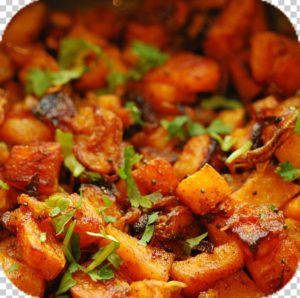Feeding Vegan Food to Large Groups on a Budget

By Lucia Rivera, VRG Intern
Feeding 100 people healthy vegan food on a budget was a regular practice for volunteers, including Leigh Harris, at one homeless youth shelter in Utah. For others who would want to plan and execute a similar project, Harris suggested starting with local organizations.
“Start contacting the homeless shelters in your area to see if they have any opportunities for serving meals to a group. And then if you’re wanting to specifically involve a plant-based meal, get involved with the different animal rights groups in your area […] It’s been great getting to involve two passions of helping people and promoting a plant-based diet, so definitely try to involve those in your community who share those same passions and those same views,” Harris said.
After a shelter to work with has been found, 8 to 10 volunteers are needed to complete the meal, according to Harris. She also added that this can be a positive volunteering experience for families, but any volunteer can gain something from the experience.
Additionally, no training is needed to participate as a volunteer, and teamwork “makes it very easy,” for volunteers to prepare food to feed up to 130 people. Different roles are established and filled easily in by the volunteers working on the project, in Harris’ experience.
“People will always find something to do or even washing the dishes is something that is always needed. Then, whoever is serving is usually up front and not everyone serves so there’s kind of a place for everyone during the volunteer time.”
Another role critical to the meal is someone to purchase the ingredients needed for the recipes being made that night. According to Harris, the non-profit organizations will provide the money allotted for that evening and it can take around 15 minutes to purchase the food. When picking ingredients there are several factors the volunteer should keep in mind.
“Some things that we have to take into account would probably be trying to really base the meal off of those staples that we [mention below] and basing it off of more of a whole foods plant-based diet and usually not involving the more expensive meat substitutes and cheeses just because that can get a little costly when you’re feeding that many people,” Harris said.
Some staples that Harris’ volunteer groups have utilized previously are less expensive vegetables and pasta. When feeding large groups it is also more effective to use certain recipes that provide necessary nutrients and exclude complex food products. If a recipe is chosen that usually feeds a smaller group, Harris explained often it can simply be doubled or tripled as necessary. Additionally, a recipe can always be adapted to be vegan.
“On multiple occasions we’ve made different kinds of Indian curry dishes. Things that involve rice, vegetables, and lentils and items with coconut milk to make these curries so fulfilling. [Those] are definitely some staples we use pretty consistently and then of course pasta is always a good one,” Harris stated. “[We] just [base meals] around good vegetables and breads, always incorporating that, [and] sometimes we even make little desserts for the end.”
Overall, an important consideration is to provide “overall nutrients” and “all the good things a well-rounded meal would need.” In order to find recipes that fit these criteria, cookbooks, family recipes, and the internet can be used. One cookbook Harris used is Oh She Glows, by Angela Liddon, and also expressed “the internet is a boundless resource” for finding vegan recipes.
“One of my personal favorites [recipes] that I’ve made, and it was actually my family’s turn to make the dinner, was these stuffed shells. It’s incredibly simple, [and is] not costly. You basically just make the ricotta cheese out of the cashews, following a very easy recipe. [Then] we use some good seasoning and then stuff those shells and kinda pour the marinara sauce over them and then we sprinkle some plant-based cheese on there if we’re feeling fancy and then just bake those. Then just have a nice salad with it. It’s definitely one of my favorites that we’ve made,” Harris explained.
When Harris volunteered, any leftovers were saved and were later used to continue to feed the homeless shelter residents. The entire process of purchasing and preparing the food usually took around an hour and a half for Harris’ volunteer group, and always received positive responses from those eating the final meals.
“We’ve always been pleasantly surprised by just how affordable it is to feed such large groups on a plant-based diet. I think there’s a little bit of intimidation when it comes to feeding a large crowd a vegan meal but I really do think people will be pleasantly surprised. We’ve had a majority of very positive feedback from the youth that reside in the youth shelter and [they are] almost always coming back for seconds or thirds,” Harris said.
Leigh was a 2019 Vegetarian Resource Scholarship winner. See: https://www.vrg.org/blog/2019/05/24/utah-student-wins-5000-vegetarian-resource-group-scholarship/
For more feeding tips, see:
https://www.vrg.org/fsupdate/index.htm#Soup_Kitchens
https://www.vrg.org/blog/2016/03/10/vegan-casseroles-for-our-daily-bread/
https://www.vrg.org/blog/2017/07/17/vegan-casseroles-for-our-daily-bread-3/
